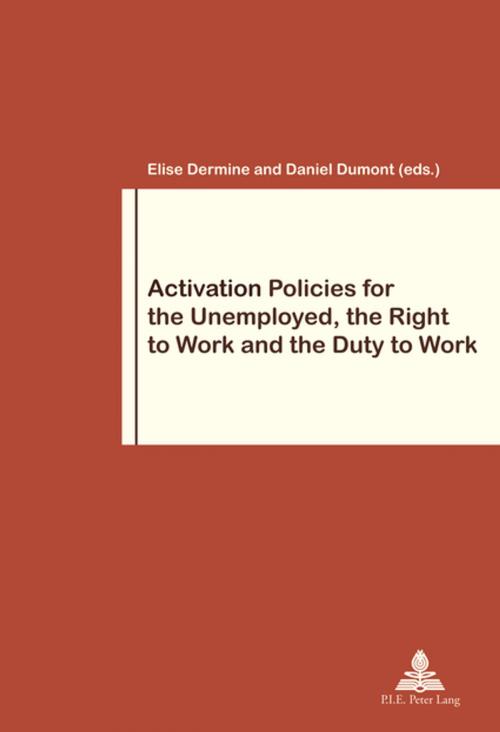Activation Policies for the Unemployed, the Right to Work and the Duty to Work
Nonfiction, Reference & Language, Law, Comparative, International, Religion & Spirituality, Philosophy, Political| Author: | ISBN: | 9783035299106 | |
| Publisher: | Peter Lang | Publication: | December 15, 2014 |
| Imprint: | Peter Lang AG, Internationaler Verlag der Wissenschaften | Language: | English |
| Author: | |
| ISBN: | 9783035299106 |
| Publisher: | Peter Lang |
| Publication: | December 15, 2014 |
| Imprint: | Peter Lang AG, Internationaler Verlag der Wissenschaften |
| Language: | English |
Since the 1990s and the 2000s, Western social protection systems have experienced a turn towards activation. This turn consists of the multiplication of measures aimed at bringing those who are unemployed closer to participation in the labour market. These measures often induce a strengthening of the conditions that must be met in order to receive social benefits.
It is in this well known context that the authors gathered in this book decided to take a closer look at the relationship between activation policies for the unemployed and the right and the duty to work. If activation measures are likely to increase transitions towards the labour market, we can also make the assumption that they may, particularly when they are marked with the seal of coercion, hinder or dramatically reduce the right to freely chosen work. In such circumstances, the realisation of the «right to work», which is often stated to be the aim of those who promote activation, tends in practice to be reduced to an increasing pressure being exerted on the unemployed. In this case, isn’t it actually the duty to work that is particularly reinforced?
After an historical and philosophical perspective on the issue, this assumption is confronted with the developments observed in the United States and in France, and then with the guidelines laid down in international human rights instruments. What follows is a discussion of two alternatives to the dominant activation model: the basic income guarantee and the employment guarantee.
Since the 1990s and the 2000s, Western social protection systems have experienced a turn towards activation. This turn consists of the multiplication of measures aimed at bringing those who are unemployed closer to participation in the labour market. These measures often induce a strengthening of the conditions that must be met in order to receive social benefits.
It is in this well known context that the authors gathered in this book decided to take a closer look at the relationship between activation policies for the unemployed and the right and the duty to work. If activation measures are likely to increase transitions towards the labour market, we can also make the assumption that they may, particularly when they are marked with the seal of coercion, hinder or dramatically reduce the right to freely chosen work. In such circumstances, the realisation of the «right to work», which is often stated to be the aim of those who promote activation, tends in practice to be reduced to an increasing pressure being exerted on the unemployed. In this case, isn’t it actually the duty to work that is particularly reinforced?
After an historical and philosophical perspective on the issue, this assumption is confronted with the developments observed in the United States and in France, and then with the guidelines laid down in international human rights instruments. What follows is a discussion of two alternatives to the dominant activation model: the basic income guarantee and the employment guarantee.















